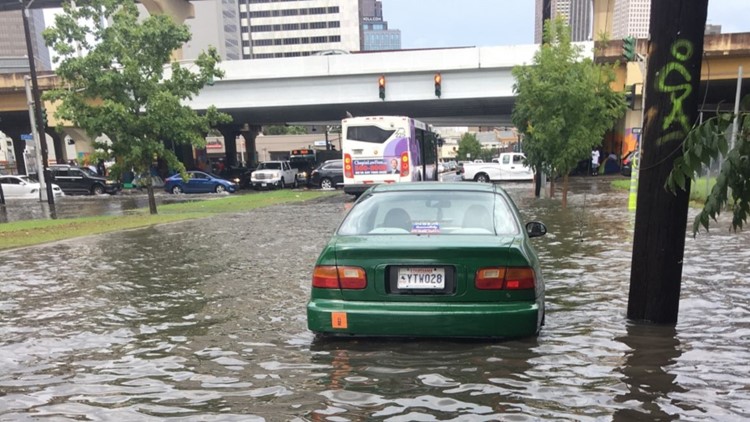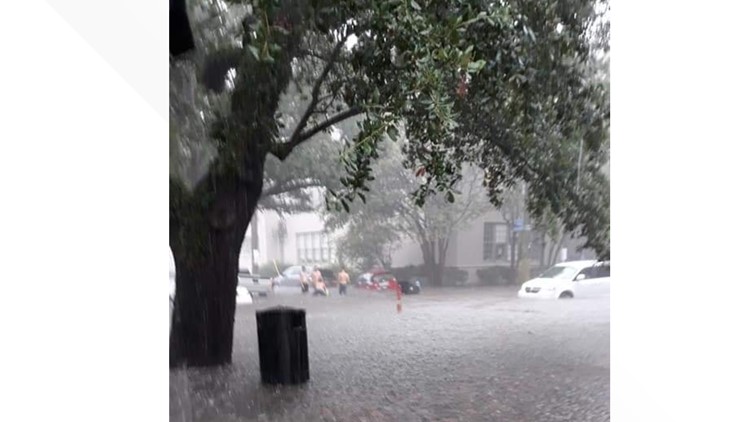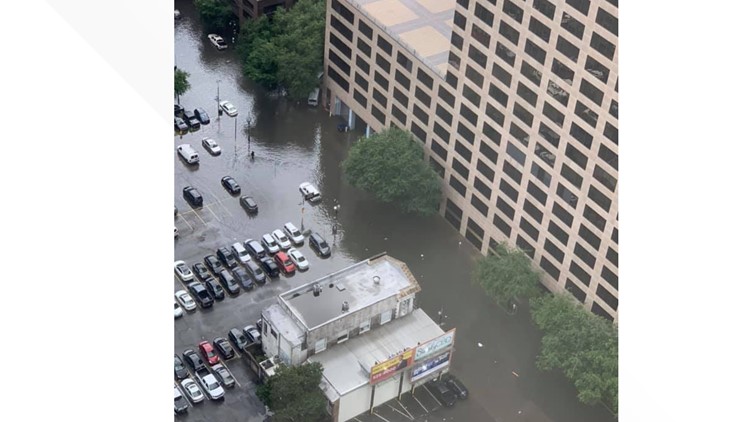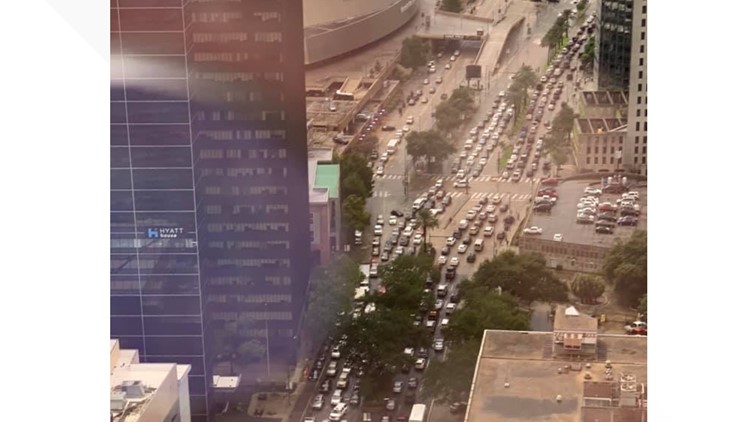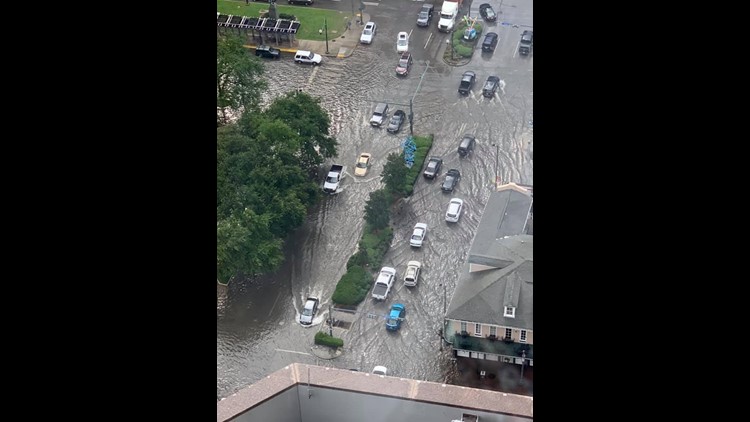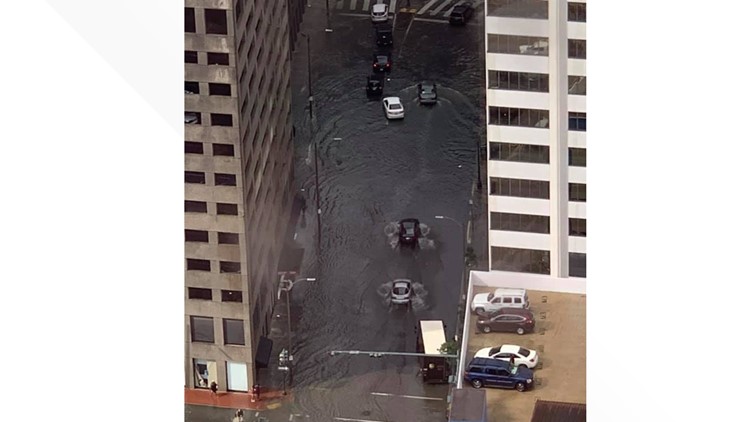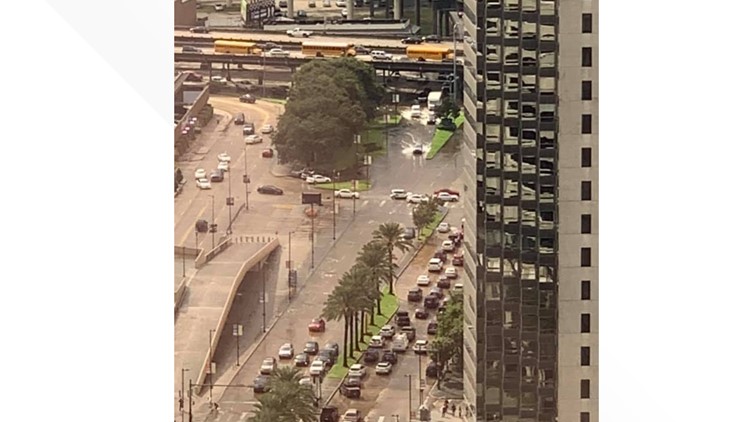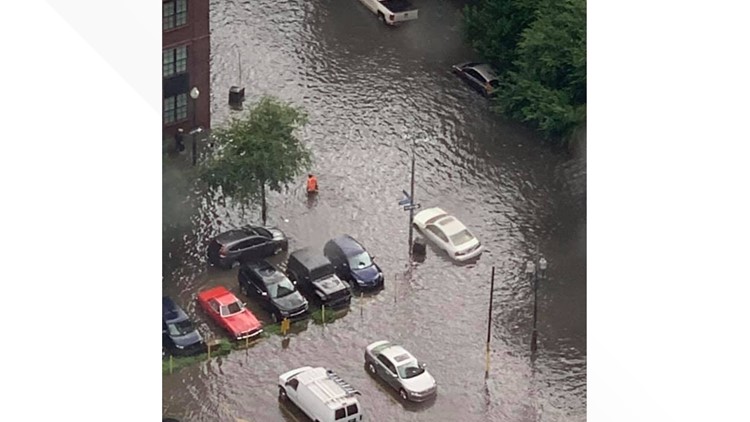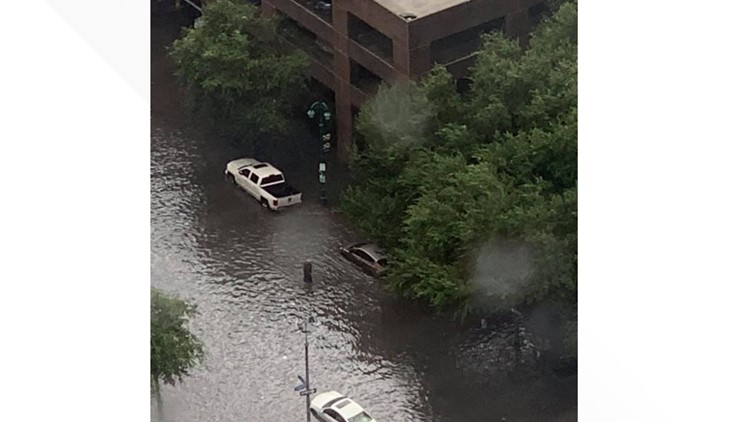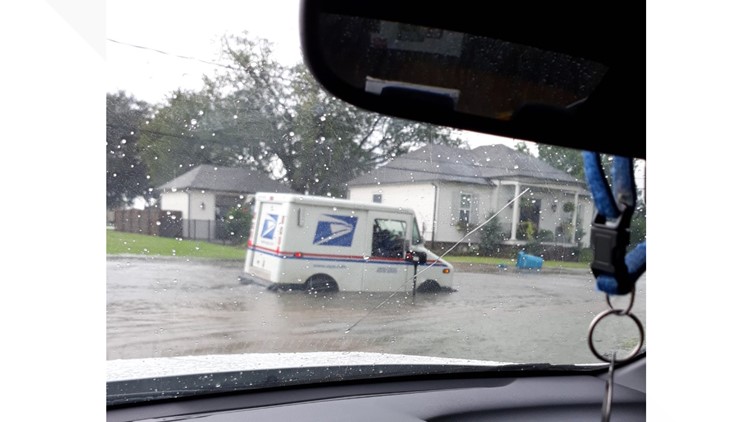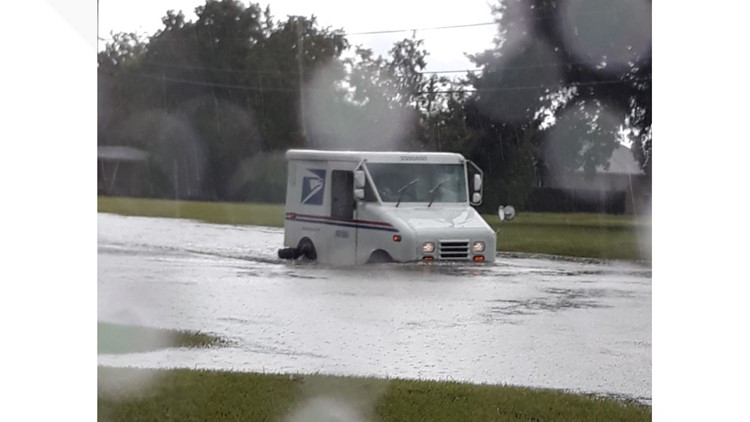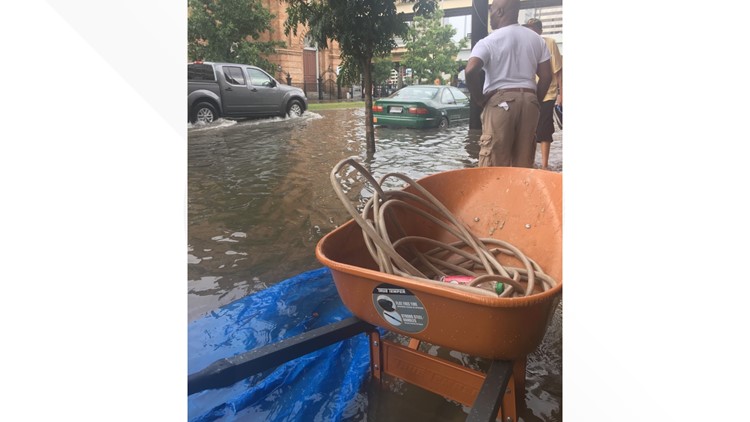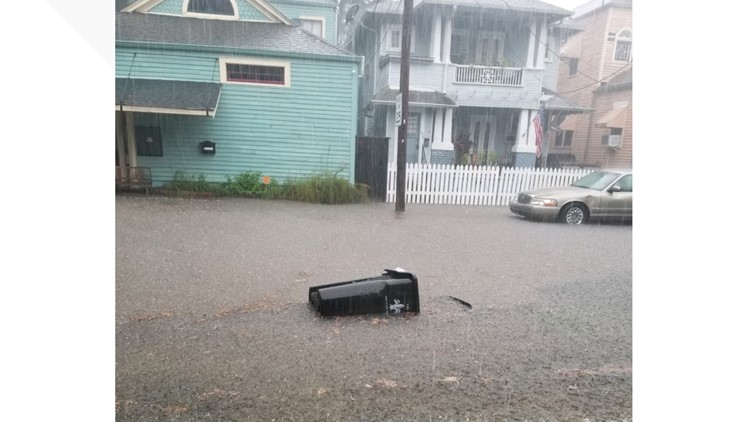NEW ORLEANS — Down the Drain is a WWL-TV investigation that explores what went wrong and where the blame lies for New Orleans' drainage crisis. Watch a brand new Down the Drain Investigation Tuesday, Sept. 10, at 6 p.m. on WWLTV.
---
John Bossier said living next to the construction of massive new underground drainage culverts on Jefferson Avenue was like living through a daily earthquake for five years.
“My wife lived in L.A. for a few years and she experienced a couple small earthquakes there, and she would say, ‘Our house is shaking more than my apartment did in the earthquakes in L.A.!’” he said.
But as they suffered through the disruption and their home’s cracking and even crumbling foundation, the Bossiers always took solace in one thing: The new box culverts would hold an enormous amount of stormwater when they were finished and would clear water off their property faster.
Instead, they flooded three times in four months this summer, after the so-called SELA project was done.
The Mother’s Day flood in May came almost as soon as the last batch of sod was laid on the Jefferson Avenue neutral ground to complete the Corps of Engineers’ construction of the SELA culvert there. The Bossiers got 6 inches of water in their house then, a foot and a half during a July 10 rainstorm and another half-foot on Aug. 26.
And they’re angry about it.
“We’re trying to be resilient and hope that the right things will be done and progress will be made and we can get this fixed,” Bossier said. “It seems only right.”
From August 26th flood event - story continues below
New Orleans flooding
The Corps built three large culverts under three main Uptown avenues – Jefferson, Napoleon and Louisiana – and expanded the connection along Claiborne Avenue, tying up the area’s most significant traffic arteries between 2013 and early this year.
Before the SELA work began, the S&WB General Superintendent Joe Becker said the new culverts would feed Uptown stormwater up Claiborne Avenue to the Monticello Canal on the Jefferson Parish line. Now, a decade later, Becker is gone and the S&WB says the water from those culverts goes the other direction, to Pump Station No. 1 on North Broad Street.
S&WB spokesman Rich Rainey said a "stop log," or wood dam-like structure was inserted into the Claiborne Avenue canal just west of Nashville Avenue, assuring that all of the water coming through the new SELA culverts heads to Pump Station No. 1.
The SELA improvements all stem from widespread flooding on May 8, 1995. The resulting $3.1 billion in insurance claims set a record at the time for an unnamed storm event, and the federal flood insurance program had to foot the bill for repairs.
So, Congress responded by authorizing $1.5 billion in drainage improvements over the next 20 years, with the idea that improving the infrastructure would prevent rising flood-repair costs in the future. The Uptown culverts were among the last pieces of that puzzle.
But after this summer’s floods, there are questions about whether those improvements have had unintended consequences for New Orleans’ antiquated drainage system.
(Story continues under video) Can't see the interview with S&WB Chief Executive Ghassan Korban? Click here
When the Corps completed the SELA culverts, they were turned over to the Sewerage & Water Board. The board’s executive director, Ghassan Korban, doesn’t believe the increased capacity in the SELA culverts would have any negative impact on surrounding drainage, but he said he’s hired an outside engineering firm to analyze the flow and determine if it’s causing any bottlenecks.
“It's very tough to convince people who have been struggling and suffering because of damage associated with flooding, but hopefully when we have that scientific study, hopefully it will alleviate some of those concerns,” Korban said.
Bossier is a mechanical engineer by training, and he thinks there might be a bottleneck at Claiborne Avenue, where the three new SELA culverts come together. He thinks that could be causing water to bubble up from city catch basins and small drainage pipes right next to the new culverts.

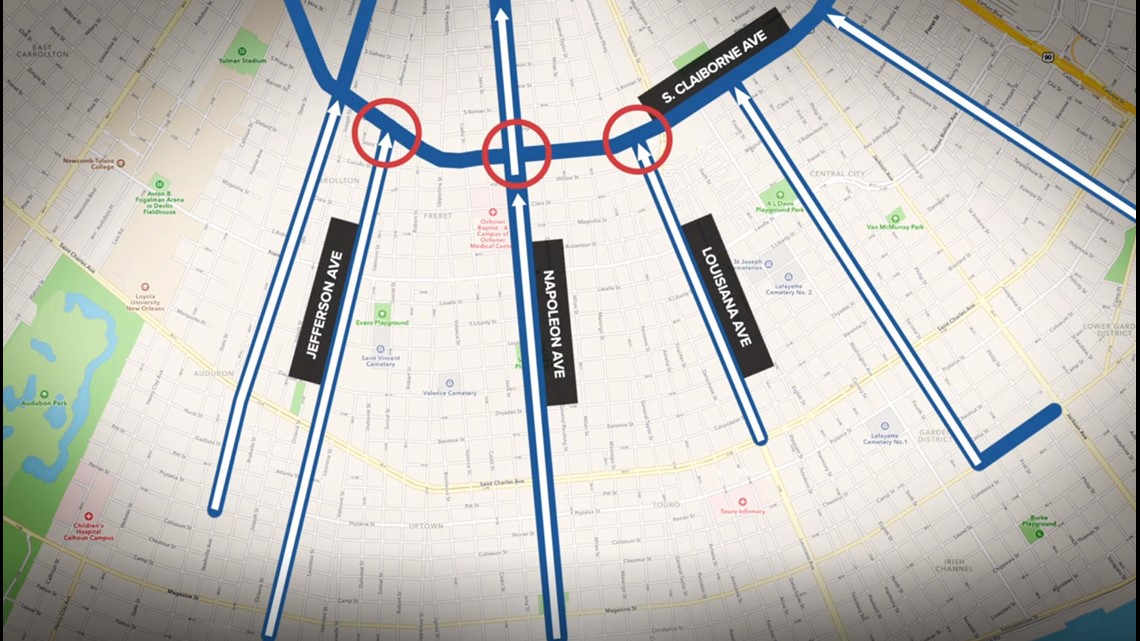
“Farther out areas are draining much faster, so all that water is coming here, and apparently we’re at a bottleneck at Claiborne and Jefferson,” he said.
H.J. Bosworth, an engineer with Levees.org, also thinks the increased capacity of the larger culverts is moving the flooding problem to new places.
“Like an improved interstate, it just moves the traffic problem closer to where the congestion is,” he said.
But city leaders say the problem isn’t with the SELA culverts or the Sewerage & Water Board’s system at all – not even tangentially. As Korban says, once the water gets into the culverts, they store the water there. At the very least, that takes water off the streets.
That's why he and other engineers believe the drains and drainage pipes that carry stormwater to the S&WB’s culverts and canals are the problem. And those initial parts of the system are owned and maintained by the City of New Orleans’ Department of Public Works.
That department is historically underfunded for maintenance and has struggled to keep up with cleaning 72,000 catch basins. Lateral pipes as narrow as 10 inches in diameter connect most of those catch basins, and many of them are choked with sand and other debris.
Joey Wagner, the Corps’ senior project manager for the SELA projects, bristled when WWL-TV asked what he would tell Bossier and others who think the construction has contributed to recent flooding.
Story continues under video
“Like the mayor says, move your cars to the neutral ground," he said. "We all know there are certain areas of the city that are going to flood. And it’s going to continue to flood until the system is totally overhauled.”
And Mayor LaToya Cantrell backed up Wagner at a news conference last week: “Until the city, until we start dealing with our local issues relative to infrastructure, then we will not see the system working as intended.”
She focused her ire on the large amounts of debris New Orleanians regularly dump into the drainage system, and then blamed the intensifying rainfall. Officials have been wary of putting too much blame on global warming or climate change after former Sewerage & Water Board Director Cedric Grant tried to blame changing weather patterns for flooding in August 2017, only to have WWL-TV uncover proof that crucial pumps weren’t working.
He was removed as director a few days later.
But the pumps that contributed so mightily to the 2017 failures have not been a part of the problem in the 2019 floods. And that’s led to a new focus on the gravity-based drainage infrastructure that carries stormwater to the pumping stations.
For example, when the Sewerage & Water Board saw the Lafitte Canal overtop slightly July 10, it decided to look inside a 2.5-mile underground stretch of the canal for the first time in over a decade. That’s when they found a car from Hurricane Katrina and another 20,000 tons of debris, Korban said.
Bossier said he appreciates Korban’s honesty and hands-on leadership over his first year at the helm of the S&WB, but remains frustrated that it’s taken this long for all of the responsible agencies to get a handle on these basic elements of drainage.
“Even the best intentions are not enough right now,” he said.
---
Read more Down The Drain:
---
WWL-TV Investigator David Hammer can be reached at dhammer@wwltv.com; Contact all of the WWL-TV Investigators at investigations@wwltv.com;
---
Problems with flooding? An unusually high water bill? The official "Down the Drain" Facebook group is the place to go. Click here to join the group.



